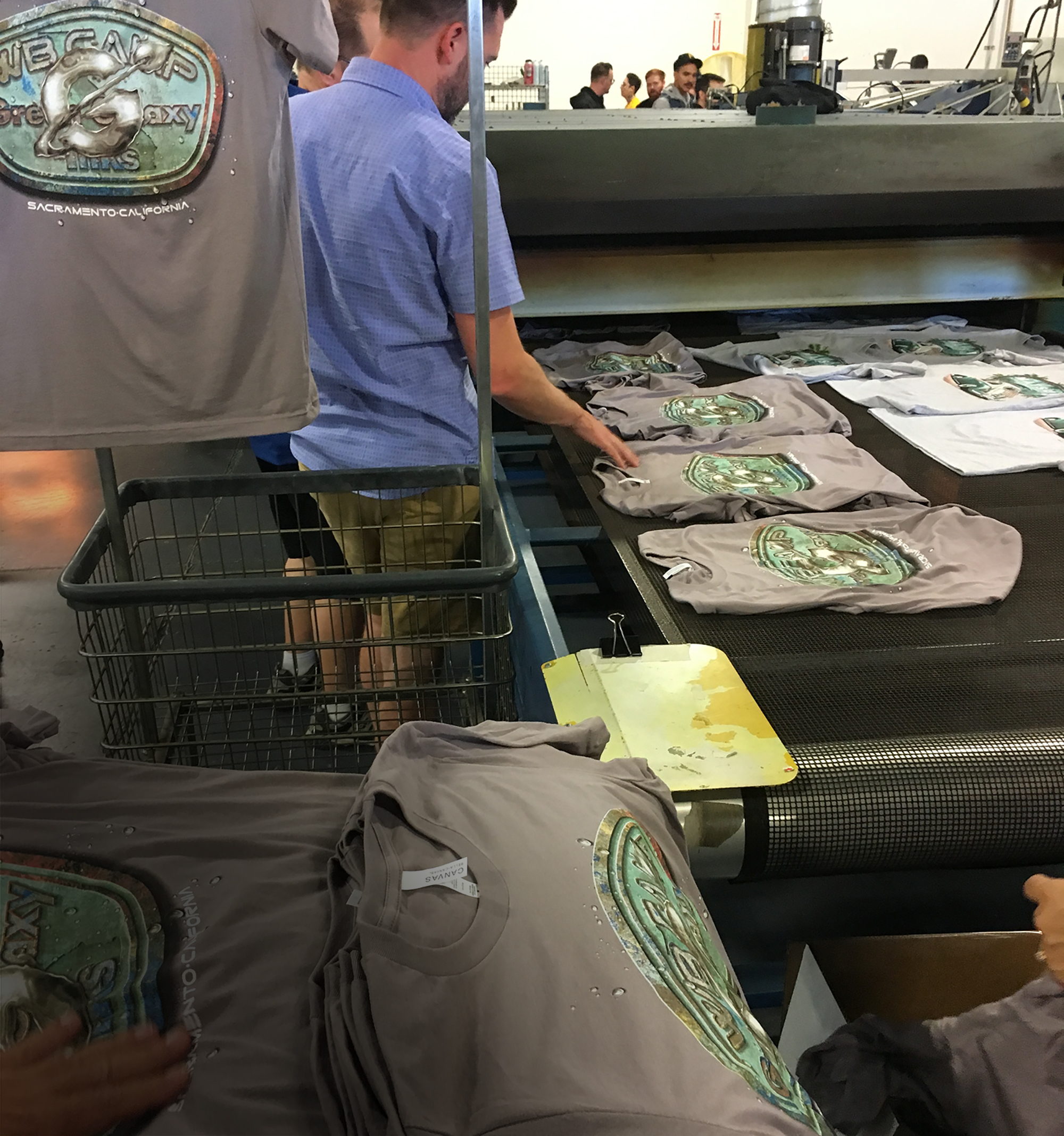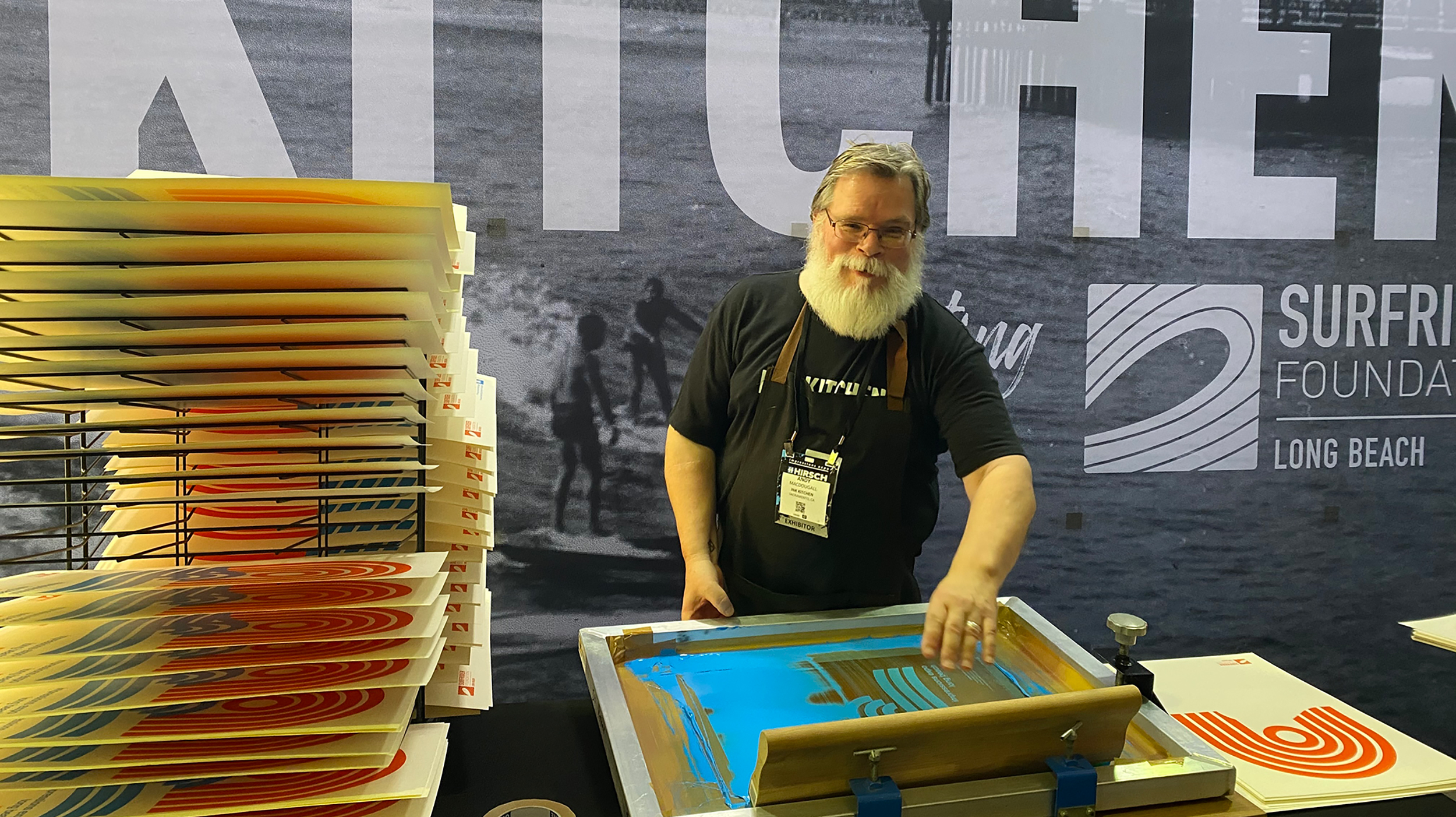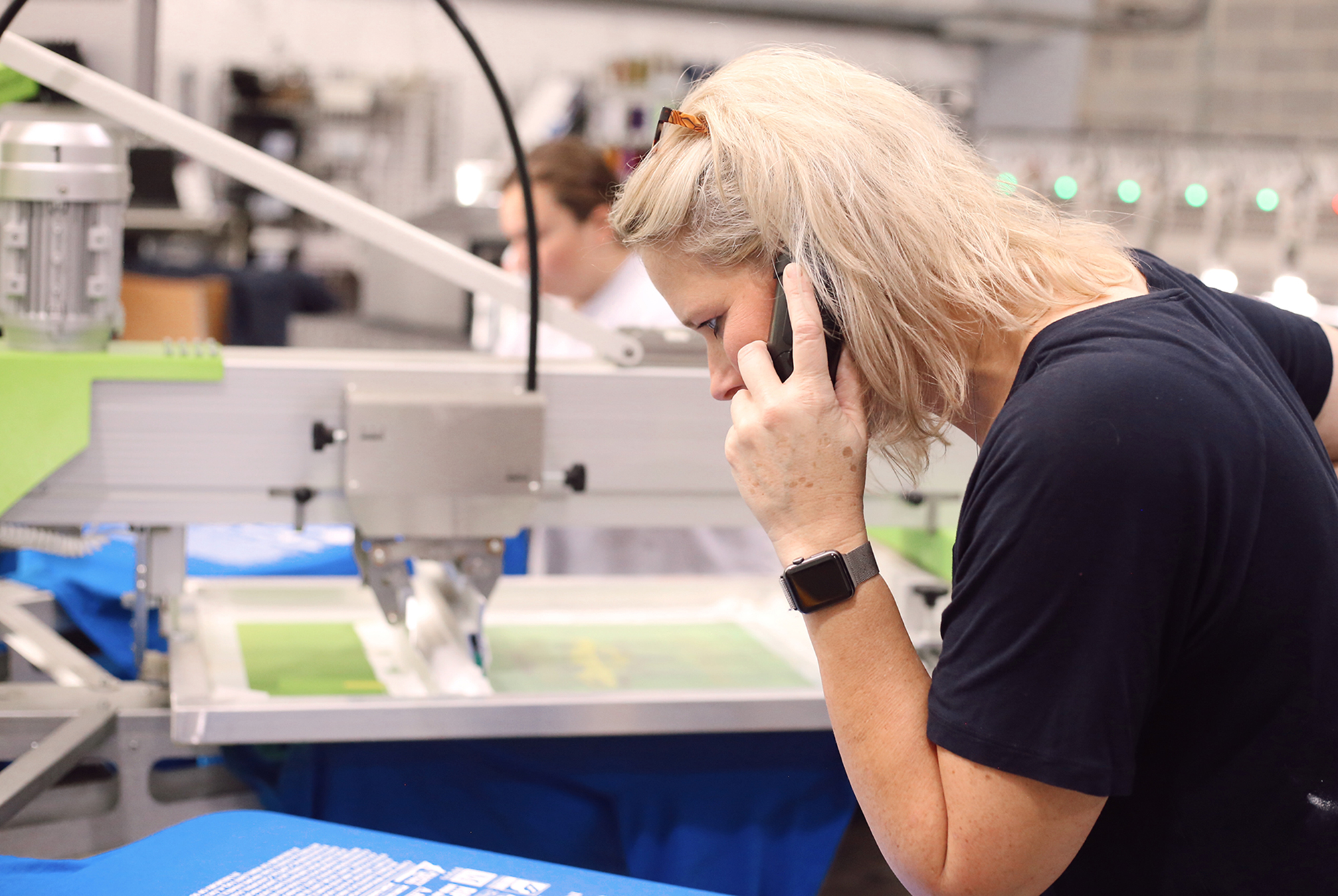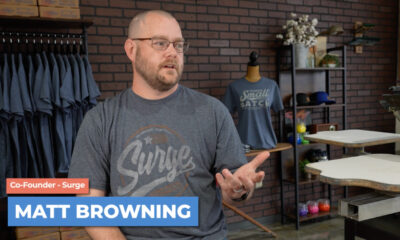Expert Perspectives
Screen Printing Editorial Advisory Board Members Reflect on How 2020 Affected Their Businesses
Published
3 years agoon

Mark Coudray, Founder, Coudray Growth Technologies; Max Hellmann, Co-owner, Business Development and On-Site Activations, Family Industries; Alison Banholzer, Owner/Chief of Flight Operations, Wear Your Spirit Warehouse; Andy Macdougall; Nathan Leber, Marshall Atkinson
What was the biggest surprise of the year? I think we can all agree COVID-19 will be the resounding response — but the specific answers may vary. For some, it may have created major challenges, while others found unexpected success. How did the pandemic affect your shop from March through December? What did you learn from it?
AdvertisementMark A. Coudray: As a business coach, it has been crazy busy. The gamut ranged from “How do I close and liquidate my business?” to “How do I buy these failing shops?” Some clients lost 95 percent of their business as events, schools, and concerts all shutdown. They pivoted to masks, downsized, and are profitable at a lower sales volume with cash in the bank.There was a massive expansion of Zoom and GoToWebinar meetings. I was already on those platforms, but now it’s multiple meetings per day. We did end up going to IP phones so we could communicate with remote employees. Sales are down, but so are costs.
Max HellmanN: Any businesses that can pivot or think on their feet will be the ones that will survive the long haul. There were so many various paths created in order to make up for lost revenue this year, and the ones that made it through were the most creative and strategic in implementing their path.
Andy MacDougall: Biggest surprise for us was getting two grants. One allowed me to accelerate hiring/training my replacement, plus an educational coordinator, and a 2D/3D artist/editor. I was able to really dig into completing “Screen the World.” The second one was sourcing funds to complete the much-needed upgrades to equipment we had been planning. I’m so stoked with the young people who joined our team this year and have transformed the way we do business. We literally ripped out my office — that’s one way to get rid of me — and Alivia took over most of the day-to-day administration and management of the shop and the employees. Our customers have also driven a lot of the changes at work.
Nathan Leber: Initially it was a massive amount of entire team meetings. A lot of “What do we do? Is there a new need for a product? Creative ideas?” For the most part, we rebounded out of it. We made our sales team target companies with large online followings only. We didn’t buy much that we didn’t need, and we conserved every dollar of cash that we could. Spending was significantly more conservative than ever before, and we looked at ways to eliminate unneeded costs and subscription services.

Most tradeshows and industry events moved from in-person to virtual platforms. Explain how this change affected your business. Did you have more time to attend virtual events? Or, without hotel and airfare booked, did you add them to your calendar, but never actually log in?
Alison Banholzer: Virtual tradeshows have been a bust for me on many levels. First, I like to touch and feel product. Nothing can replace an in-person tradeshow. Second, without the time “carved out” of my schedule, I have registered for several but never actually attended them. This does, of course, put me on the vendor email lists, which allows me to see specials, etc. But it isn’t the same. Third, I use the tradeshows for networking and masterminding (is that a word?). It’s really a lot about who you connect with and eat lunch with, or even hang out at the hotel bar with after the show. I am very social, which is a huge part of the tradeshow for me. This brings me to my last point. One of the big reasons I find in-person tradeshows important is because I can gauge your company culture. I can’t tell you the number of times I’ve walked into a booth at the same time as two other men. The sales rep will, 99 percent of the time, look to and address the men first. If there is only one sales rep, they will attend to both men first before ever approaching a female. Now, I’m completely fine if a rep acknowledges me, and says “Hey, I’ll be right with you, but I have three others, as well.” But that’s not generally how it happens. I am definitely low “man” on the totem pole. And that’s okay — I’m not going to make a big scene or a big deal of it, but I will likely be in and out of your booth before you get around to me, which means you’ve also lost my business.
MC: The virtual tradeshows do not work for me. There isn’t any networking, the most valuable part of the tradeshow experience. I also like to see and touch the machines and look at the quality of the work. Virtual lacks all of these experiences.
I have done several events that were two to three days that required full dedication to the presentations. It was excruciatingly difficult to focus and maintain attention. I came away exhausted and feeling empty. I don’t know how Impressions and Printing United are going to be able to survive without physical shows.
MH: We lost more than half of our traditional revenue on the year with live printing/on-site customization going completely dark. We made changes and grew our in-house production offerings (virtual events and custom gifting) and actually grew our in-house business from last year.
AM: At the beginning of the pandemic, I lost a number of planned trips, but then the idea of traveling gradually disappeared. Now it’s just a feeling of regret at missing the annual SGIA/Printing United event or my favorite festival in Mexico City every November. We do have a couple of “virtual events” in the USA we will be attending starting in January. And we’re developing a 10-week online course with regular Zoom check-ups on progress. My grandkids tuned me up on Zoom, so now at least I can log into a meeting and participate.
NL: As with most, we didn’t go to any in-person industry events this year. It was a major bummer. We definitely signed up for a lot more virtual events and webinars than ever before, especially early in the year. As the year progressed, we signed up for less and became more selective of who was producing the content and exactly what it was about, as the market became quickly saturated with online events.

MacDougall at Impressions Expo before the world changed.
Did you purchase any equipment this year? If so, why and how was it different than other years?
AB: I purchased a new ROQ P10. I can’t say this is new or different from other years. I generally plan and purchase one large piece of equipment a year based on production needs. Our production outgrew our previous production capability. With COVID, it became very difficult to outsource/contract. As such, it was time for us to purchase our own auto.
MC: No new purchases this year.
MH: Nothing big this year in terms of production equipment. We did finish building our new facility and the SBA rates were lower than ever.
NL: We made no major expenditures this year. We had high hopes on a few items but chose to maintain high amounts of cash until we saw things stabilize a bit. We are now looking ahead to next year with some potential purchases, but plan to do so with almost 100-percent cash paid on them vs. a traditional loan/payment plan.
AM: We had been growing in sales volume and running our used and abused equipment hard over the past five years. We did a complete reset of production along with the renovation, which ripped out three offices, included a new-to-us 6/8 textile auto, a new larger dryer, a new 6/6 manual, a water filtration system, new LED lighting, and a new, larger 24-inch film printer. This is all about helping to improve quality and allow the staff to increase their productivity while tasked with larger print runs.

Our communication has definitely changed with COVID, says Banholzer.
Has the way you communicate with your customers changed? If so, how?
AB: Our communication has definitely changed with COVID. It has made us much better! We have refined our processes to include Zoom meetings with our customers. Rather than going back and forth in emails, we’re able to schedule a 15- to 30-minute Zoom meeting to iron out all the details of an order. This is something we had wanted to do for the past couple of months, but our customers were not as receptive to the idea. Now, with COVID, and everyone being “forced” into virtual meetings, our customers have become accustomed to the practice and it’s a great way to communicate.
MC: Yes. We have made a concentrated and systematic effort to be consistent and scheduled in our communication. The outreach has been more to connect and let them know we’re still here, hanging in, and supporting them empathetically through all of this. We’re also connecting customers to each other when they need help in areas where we know they have resources.
MH: Still similar in terms of emails and calls. Very few showroom visits.
NL: Honestly, for us, very little. Almost all communication is via email so that didn’t change. Our initial contact with customers did change from in-person meetings to the majority being Zoom calls.
AM: We do so much online anyway (email) that it just seems normal. We don’t really encourage walk-ins, so anyone coming in is either a courier or a customer. We used to run a lot of weekend and afterschool courses, but that’s all gone as travel restrictions and contact protocols kill in-person teaching. Luckily, we had started developing the online training program a few years ago, and this year we are finishing it.
Many screen printers had to pivot this year. Are masks and other PPE now part of your regular offerings? What strategies have you put in place for this new area of your business?
AB: We have done a few mask orders and social distancing stickers, but this is not our strong suit. We have focused on our online store platform and our niche markets and found that to be our most successful strategy.
MC: They have been an integral strategy until things can be sorted and we have some idea of where things are headed. Now that Biden has won, I suspect we will see a mask mandate that will help a lot of printers.
AM: We did a bit of mask printing, and I think it will be a nice little sideline, like bags or bandanas, maybe a bit more universal than printed underwear. But it’s not going to replace anything.
NL: We did print a fair amount of masks this year, although we have not gone to subcontracting it exclusively as our traditional market has rebounded. So, in some ways it was a win-win. We still offer PPE yet are able to focus on what we do best.
After a year of obstacles and unexpected changes, we could all use some positivity. What are you most looking forward to this year?
AB: I’m really looking forward to this year. While the past nine months have been very challenging, it’s made us a much better company. We’ve recognized where we were falling down, and where we excelled. We have come up with new ways of overcoming our faults, and we are capitalizing on our strengths. This looks to be a very promising year for Wear Your Spirit Warehouse.
MC: Positivity is self-directed. You determine how positive or negative you are feeling. I tell everyone I know to strip away the labels and only consider what is happening as an event in time. Only an event. Not good, or bad, or anything else. With any event, there are only three outcomes and two of them are bad. Things can get worse. Things can stay the same. Or, things can get better. I choose to only look for the elements that lead to positivity and a better outcome.
For this to happen, you need to know what better means for you.
MH: Forging a new path with what we learned last year. Continuing to implement the new ideas we implemented in 2020. Looking forward to events happening in the second half of 2021.
NL: 2020 made us leaner and significantly more organized. Positive cash flow has never been higher. As grisly (yet honest) as it may sound, we had no less than four major shops in our area close their doors. So, it has sent a lot of people out looking for stable and efficient print shops. We have grown and added to what we can do and feel primed for explosive growth in 2021.
AM: Retirement! Whatever that means. I’m done with the day-to-day screen shop grind at the end of March. Hopefully by then we’ll start to be finished with COVID-19 and all the nonsense from that.
VIDEO: Marshall Atkinson looks back on how 2020 affected our businesses so we can prepare for 2021
Adrienne Palmer is the editor-in-chief of Big Picture and Screen Printing magazines. She joined Big Picture magazine in 2012 after graduating from Ohio University's E.W. Scripps School of Journalism with a BA in magazine journalism. During her time with Big Picture, she has held the roles of assistant editor, associate editor, and managing editor; she added sister publication Screen Printing magazine to her resume in 2019. She is a 2019 Folio: Top Woman in Media; spearheads Big Picture's annual Women in Wide Format Awards and Best of Wide Format Awards as well as Screen Printing's annual Women in Screen Printing Awards; is on the board of Printing United Alliance's Women in Print Alliance and the U.N.I.T.E. Together diversity and inclusion program; hosts the Screen Saver podcast; and represents the Big Picture and Screen Printing teams at numerous industry events year-round as a speaker, moderator, and panelist.

SPONSORED VIDEO
Let’s Talk About It
Creating a More Diverse and Inclusive Screen Printing Industry
LET’S TALK About It: Part 3 discusses how four screen printers have employed people with disabilities, why you should consider doing the same, the resources that are available, and more. Watch the live webinar, held August 16, moderated by Adrienne Palmer, editor-in-chief, Screen Printing magazine, with panelists Ali Banholzer, Amber Massey, Ryan Moor, and Jed Seifert. The multi-part series is hosted exclusively by ROQ.US and U.N.I.T.E Together. Let’s Talk About It: Part 1 focused on Black, female screen printers and can be watched here; Part 2 focused on the LGBTQ+ community and can be watched here.
You may like
Advertisement

Atlantis Headwear Goes Solar for Sustainable Future

Comfort Colors Announces New Proprietary Dyeing Process Called “Pigment Pure”

10 Production Scheduling Secrets That Will Have Your Team Ready to Rock
Advertisement
Subscribe

Bulletins
Get the most important news and business ideas from Screen Printing magazine's news bulletin.
Advertisement
Most Popular
-

 Case Studies2 months ago
Case Studies2 months agoHigh-Density Inks Help Specialty Printing Take Center Stage
-

 Art, Ad, or Alchemy2 months ago
Art, Ad, or Alchemy2 months agoF&I Printing Is Everywhere!
-

 Andy MacDougall2 months ago
Andy MacDougall2 months agoFunctional and Industrial Printing is EVERYWHERE!
-

 Columns1 month ago
Columns1 month ago8 Marketing Mistakes Not to Make When Promoting Your Screen Printing Services Online
-

 Editor's Note4 weeks ago
Editor's Note4 weeks agoLivin’ the High Life
-

 Marshall Atkinson4 weeks ago
Marshall Atkinson4 weeks agoHow to Create a Winning Culture in Your Screen-Printing Business
-

 Press Releases1 month ago
Press Releases1 month agoSports Inspired Clothing Market: The Influence of Sports on Fashion Forward Looks
-

 Case Studies1 month ago
Case Studies1 month agoScreen Printing for Texture and Depth










